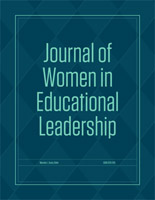Educational Administration, Department of

Journal of Women in Educational Leadership
Date of this Version
10-2007
Document Type
Article
Citation
Journal of Women in Educational Leadership, Vol. 5, No. 4-October 2007 ISSN: 1541-6224
Abstract
Hildegard of Bingen was born in Bermersheim, Germany near Alzey in 1098 to the nobleman Hildebert von Bermersheim and his wife Mechthild, as their tenth and last child. Hildegard was brought by her parents to God as a "tithe" and determined for life in the Order. However, "rather than choosing to enter their daughter formally as a child in a convent where she would be brought up to become a nun (a practice known as 'oblation'), Hildegard's parents had taken the more radical step of enclosing their daughter, apparently for life, in the cell of an anchoress, Jutta, attached to the Benedictine monastery at Disibodenberg" (Flanagan, 1989, p. 3). Gossman's analysis of Eibingen Benedictines Marianna Schrader and Adelgundis Fiihrkotter's research, concluded that Hildegard "saw light phenomena as early as the age of three, even before she could express herself about it, and all during childhood she had visionary impressions" (p. 27). In early conversations with Jutta, Hildegard intimated that she knew she was different from those around her. At first, this was "more unsettling than strengthening to her, as she was not yet able to justify her visionary gift with her calling, as she would as an adult" (Waithe, 1989, p. 28).


Comments
Copyright © 2007 Pro>Active Publications. Used by permission.